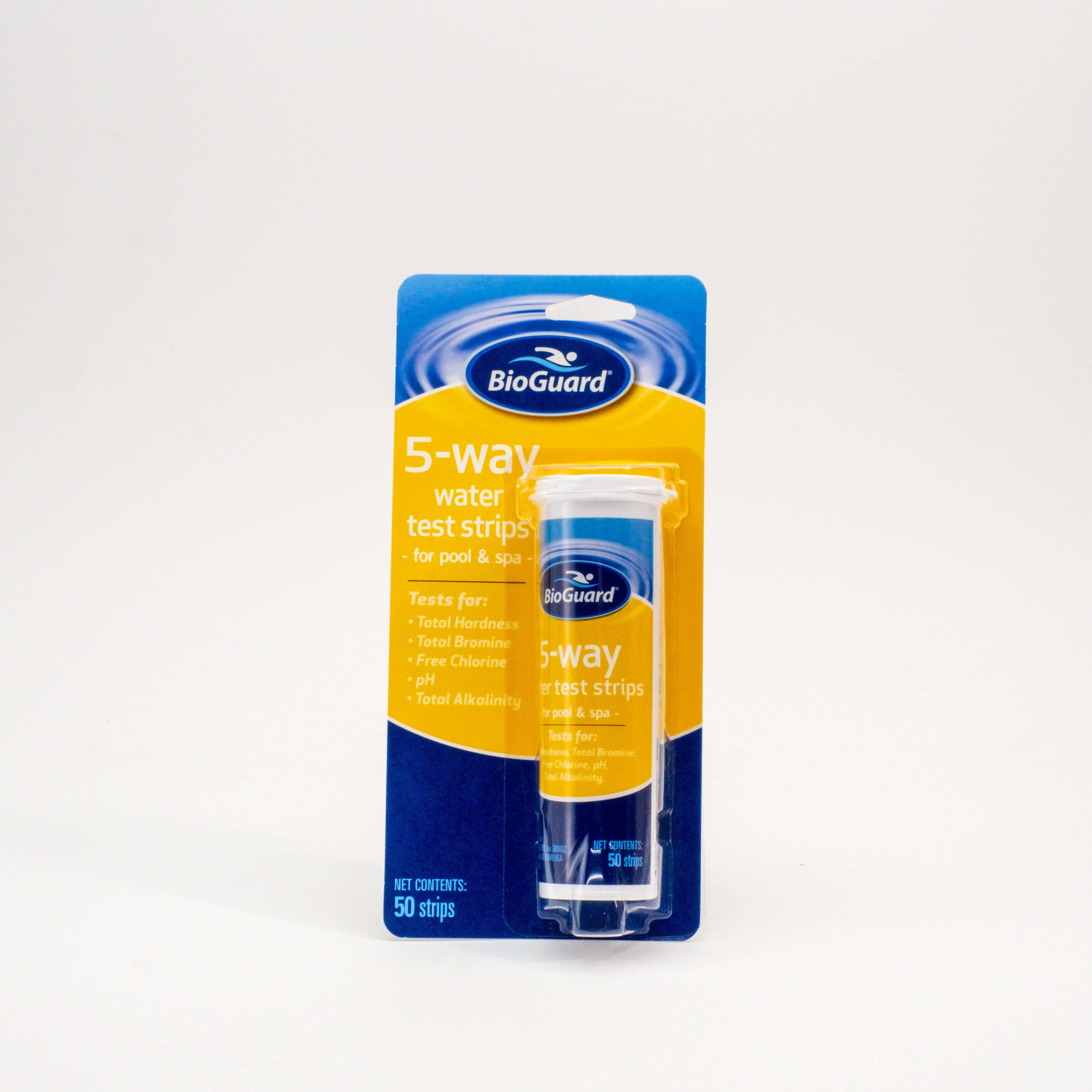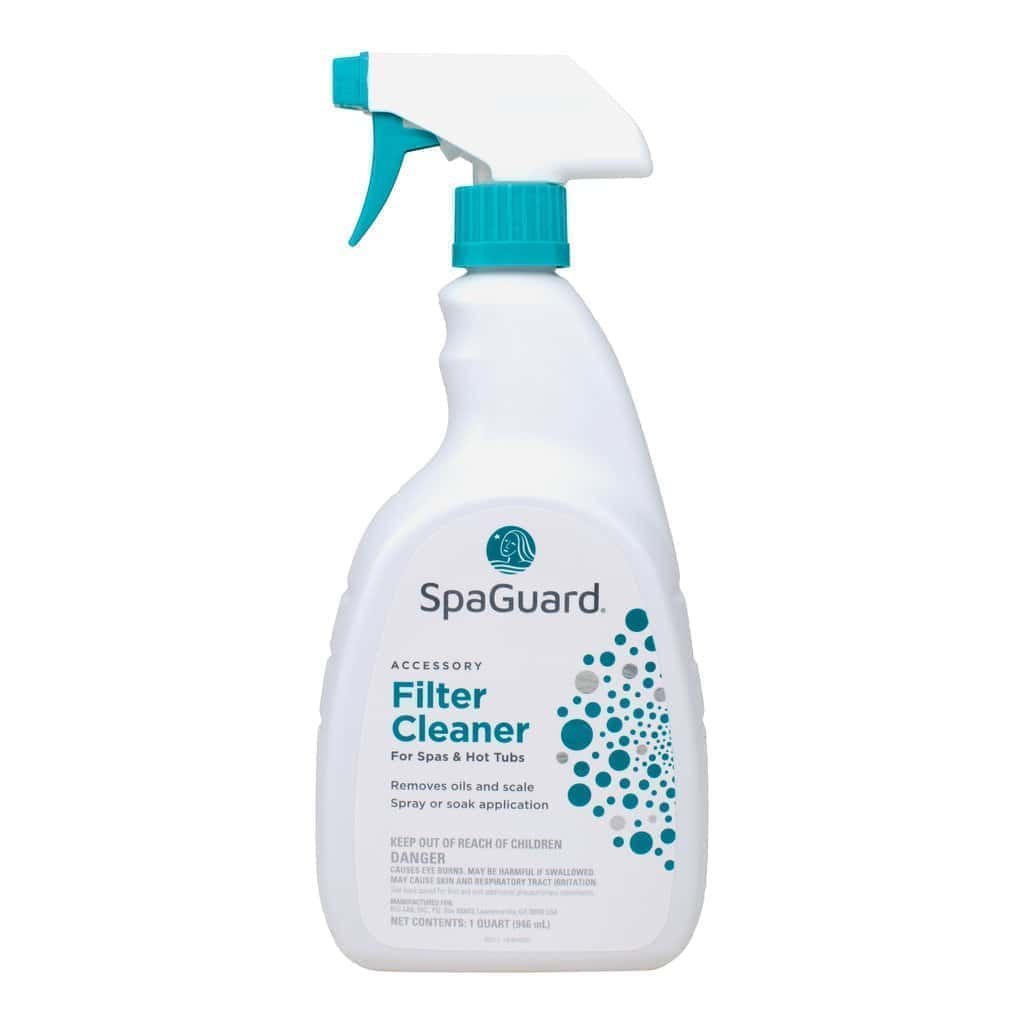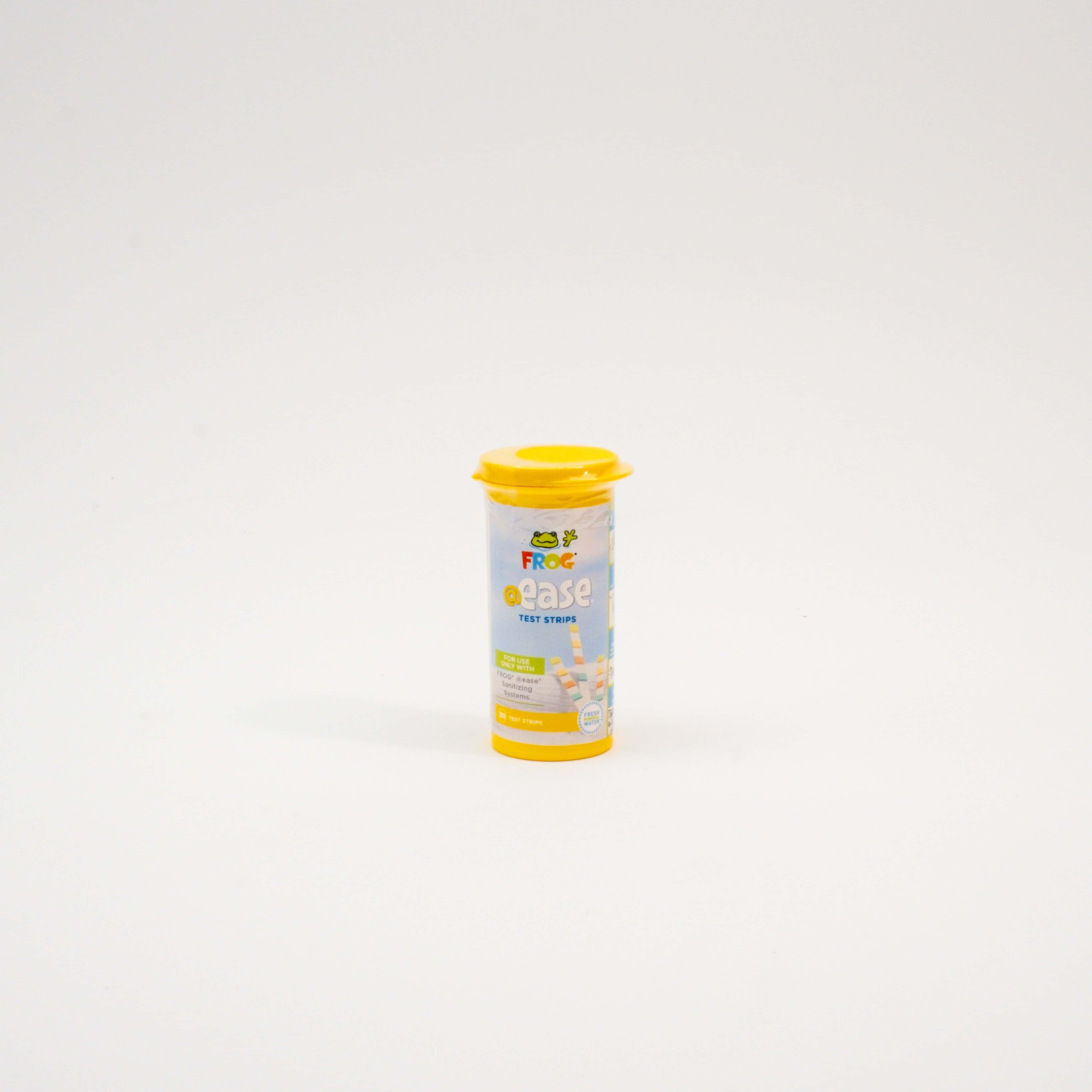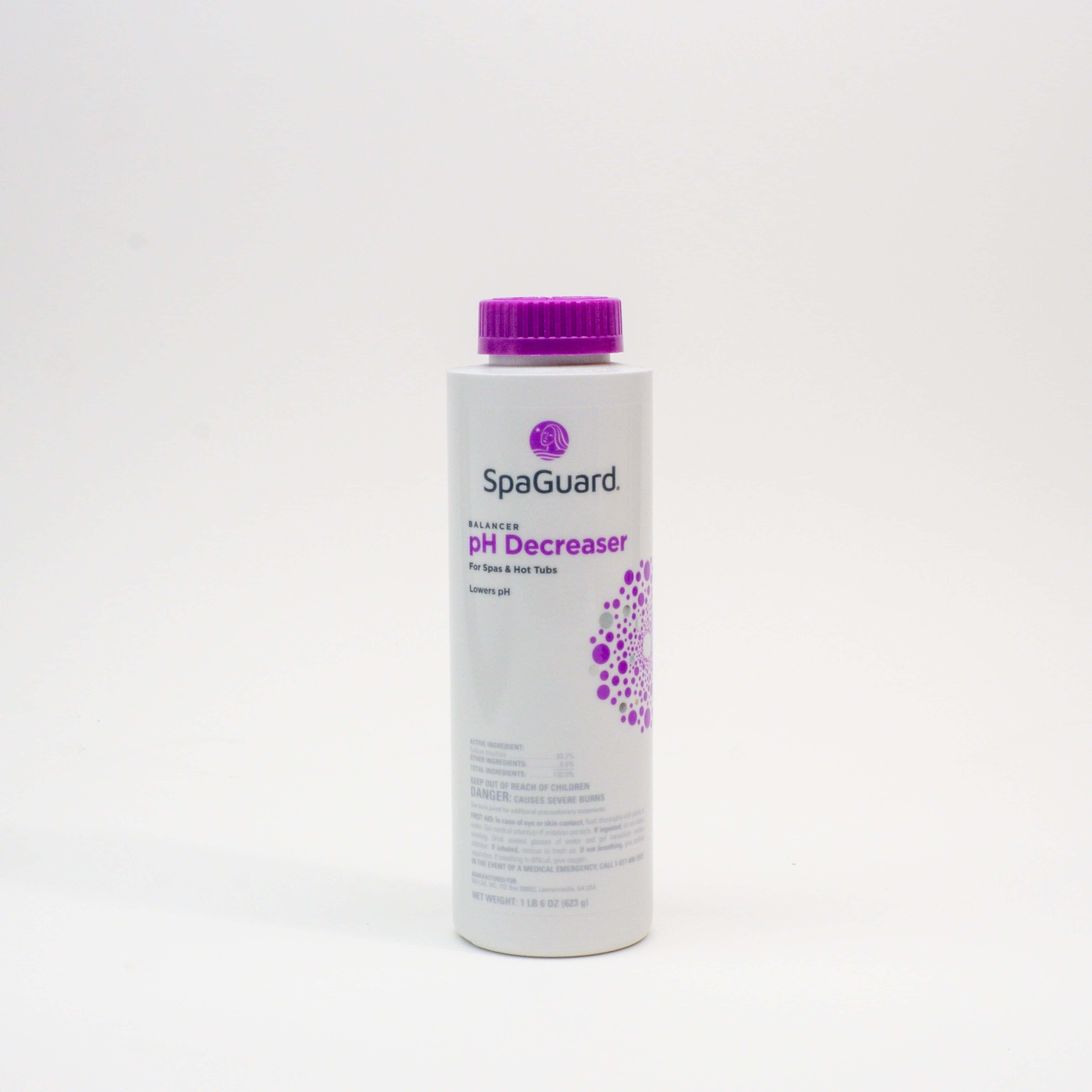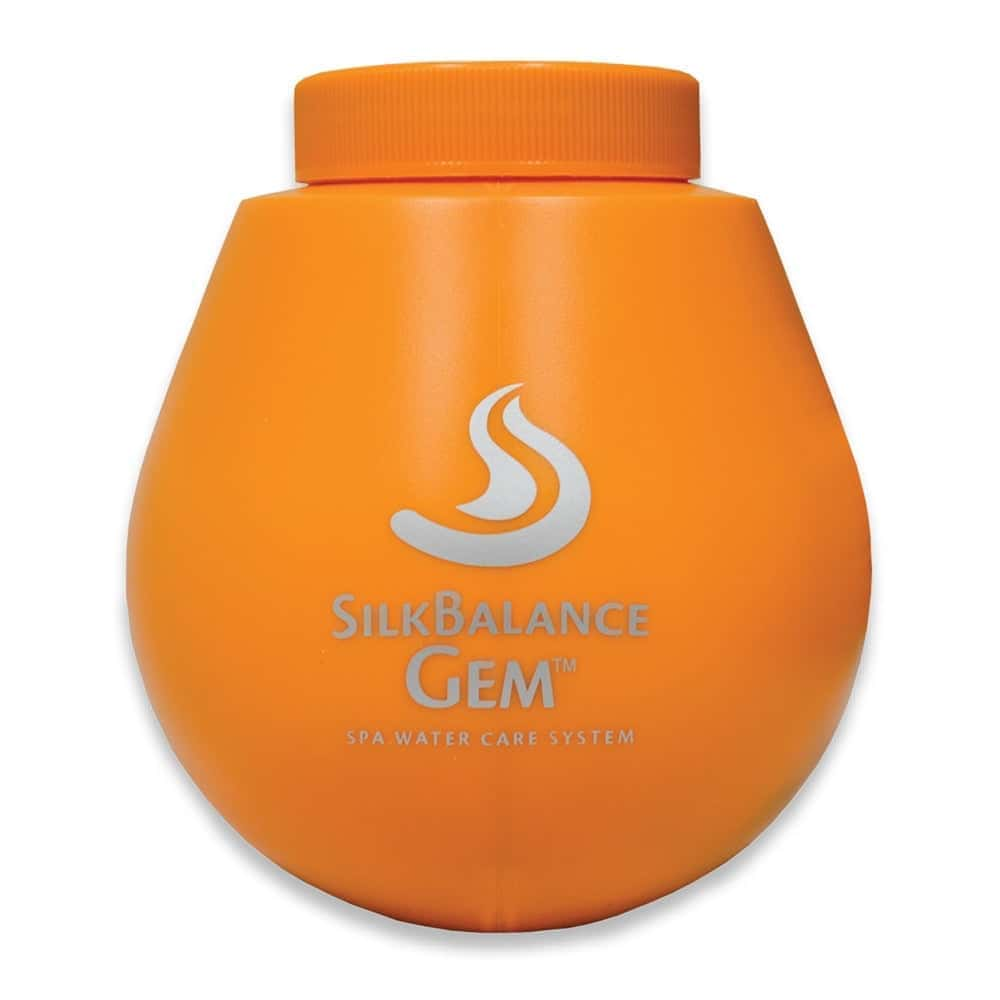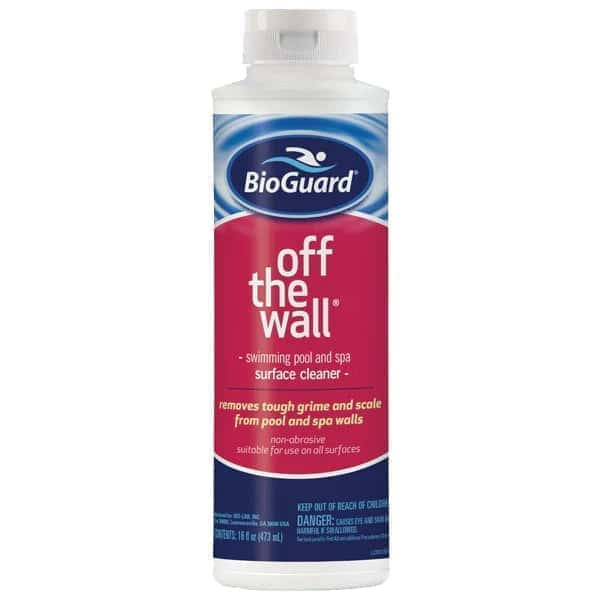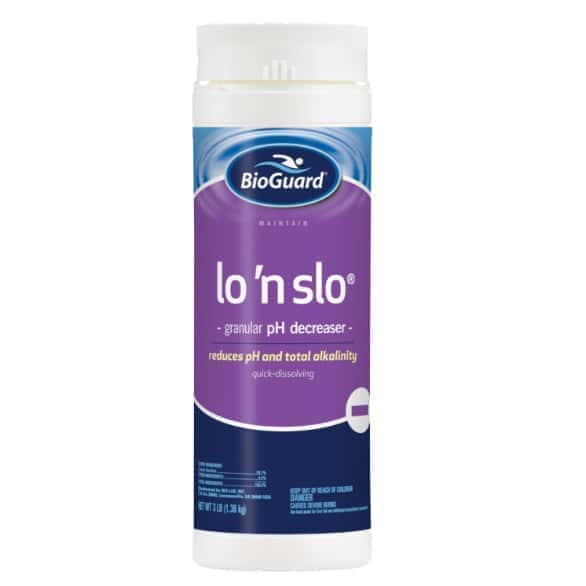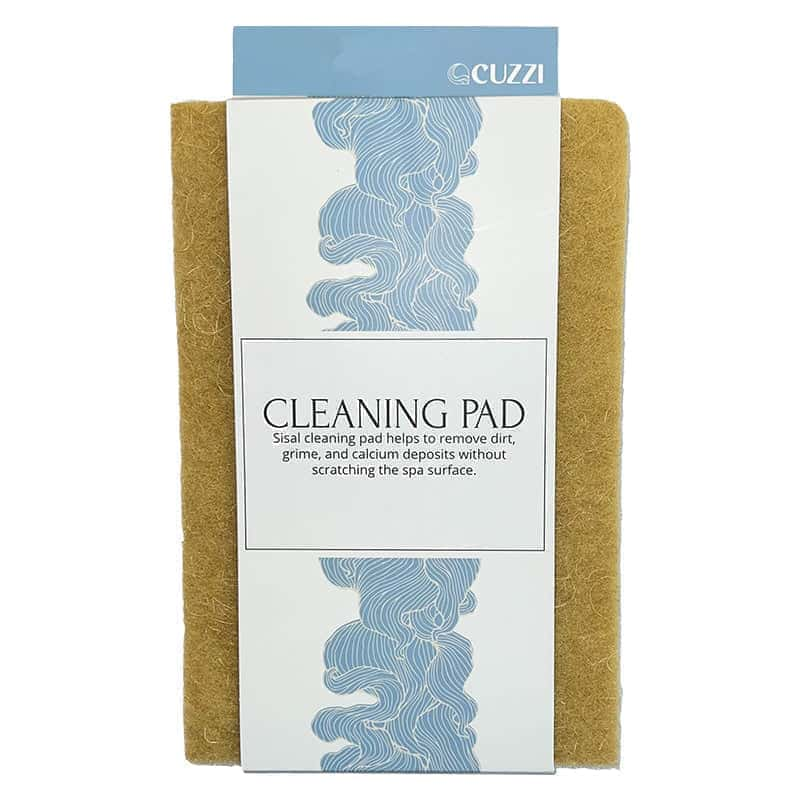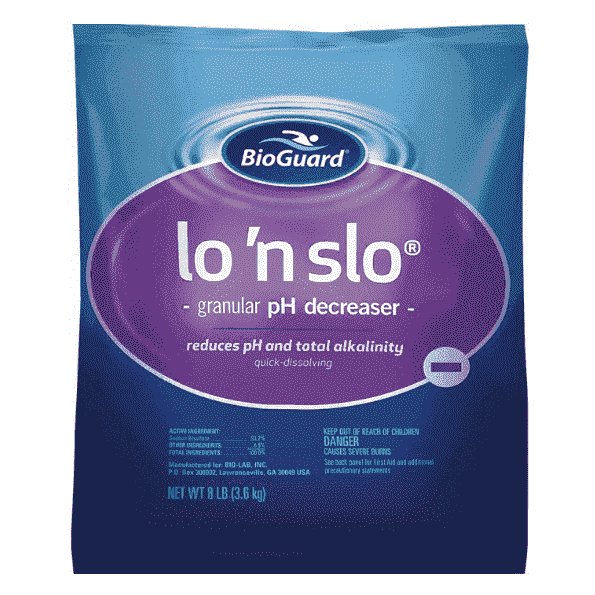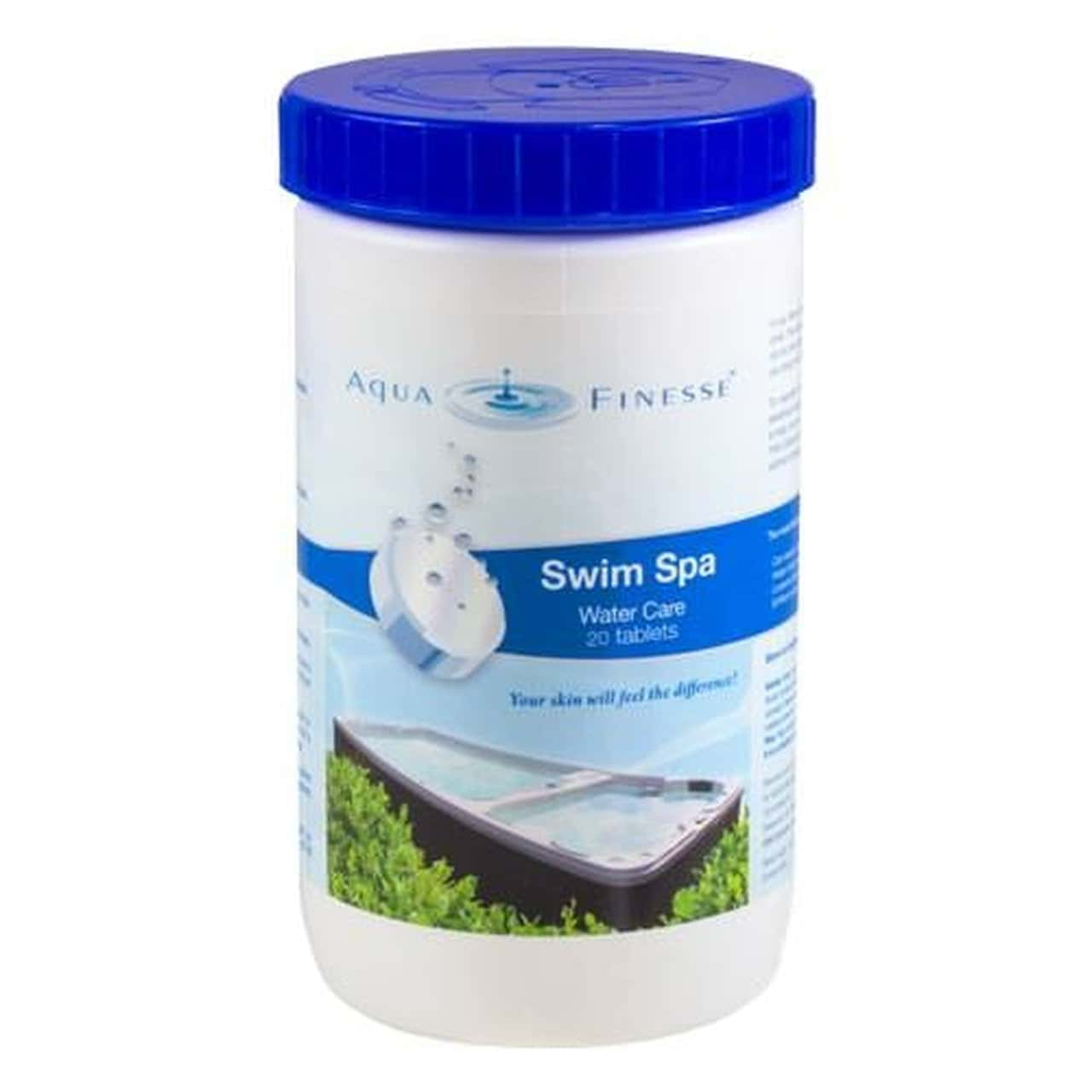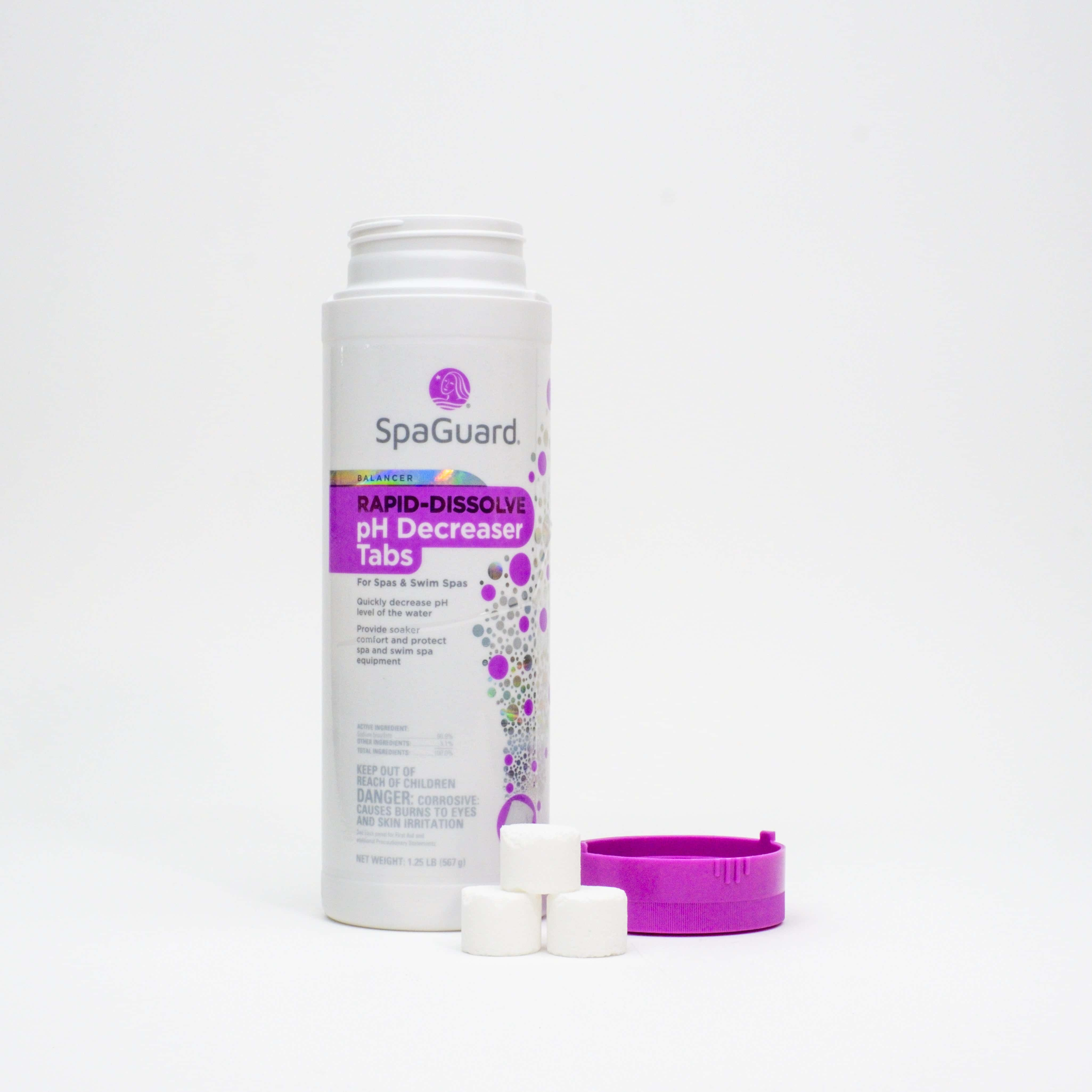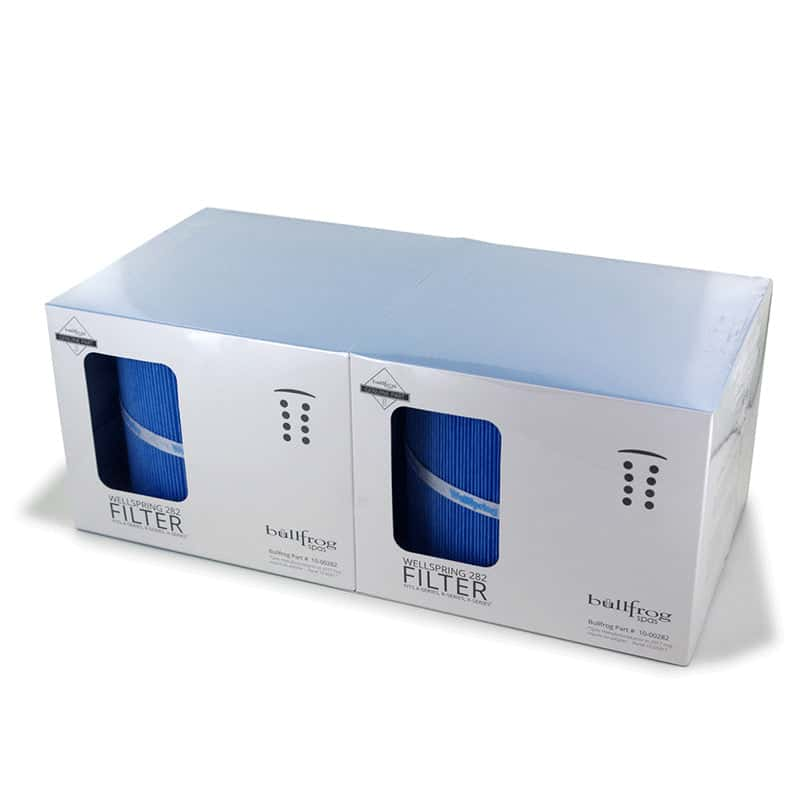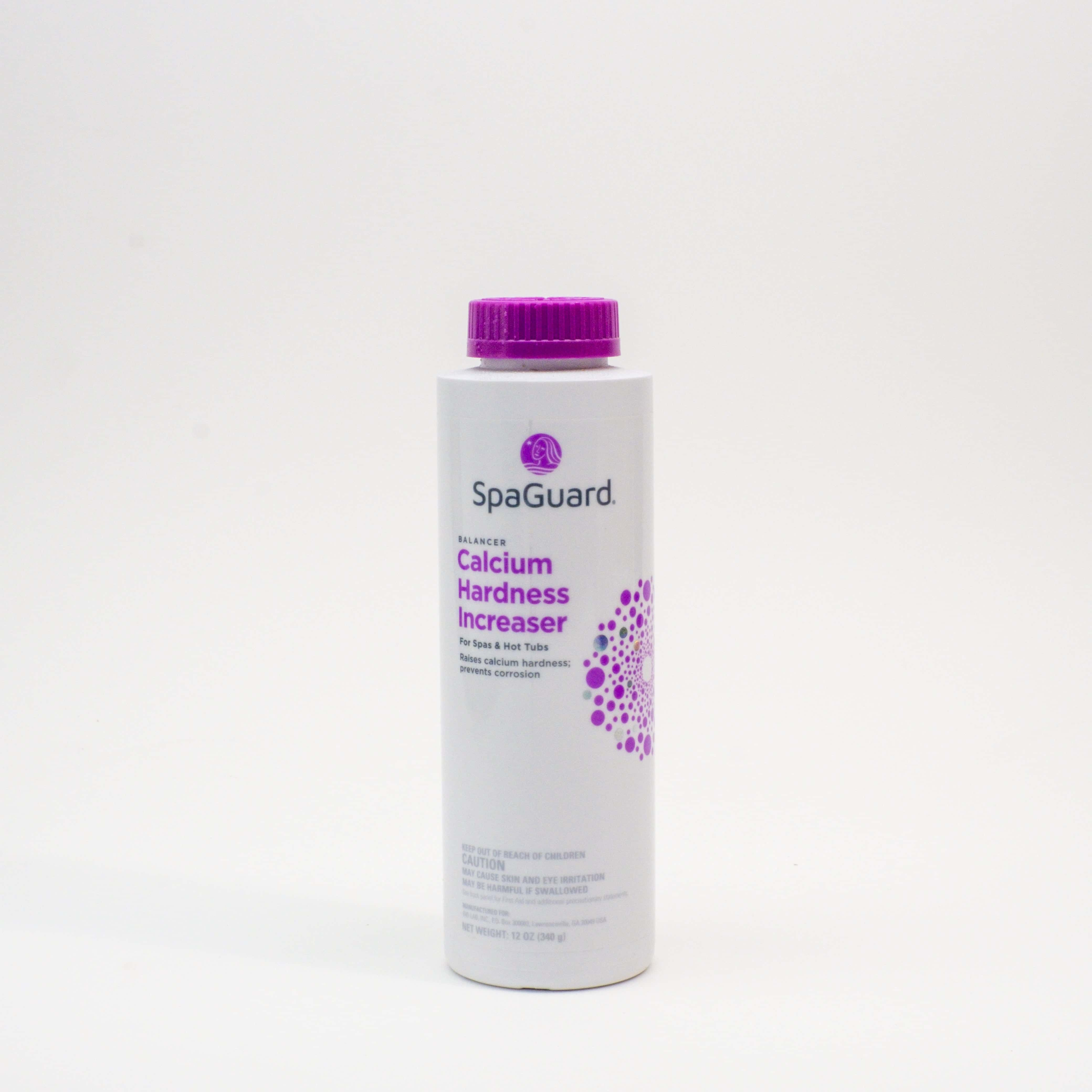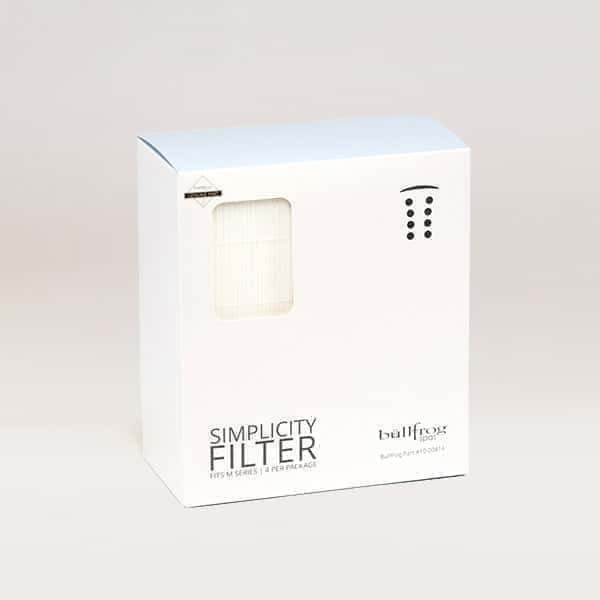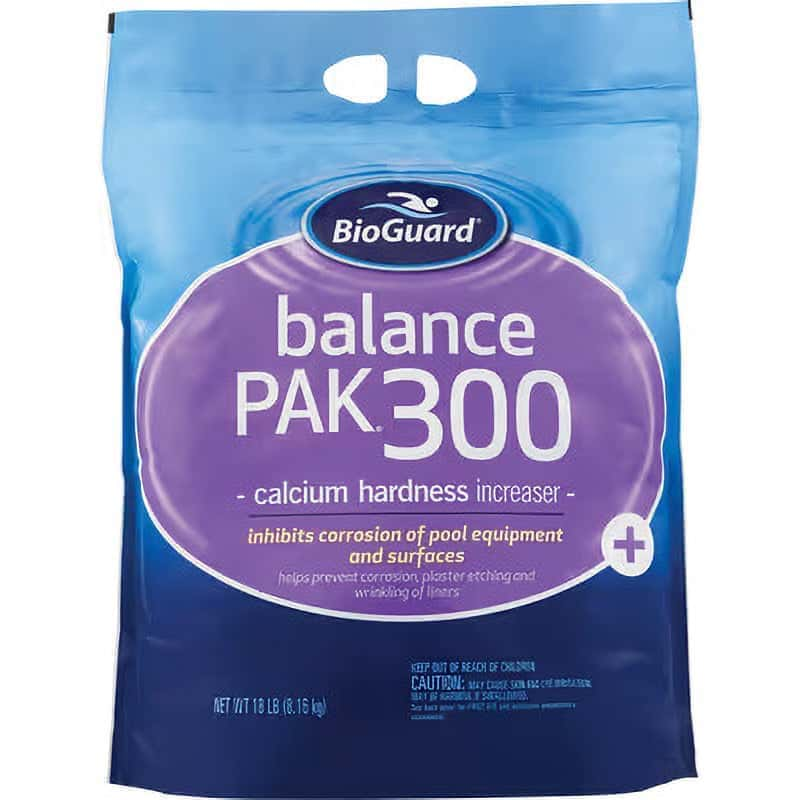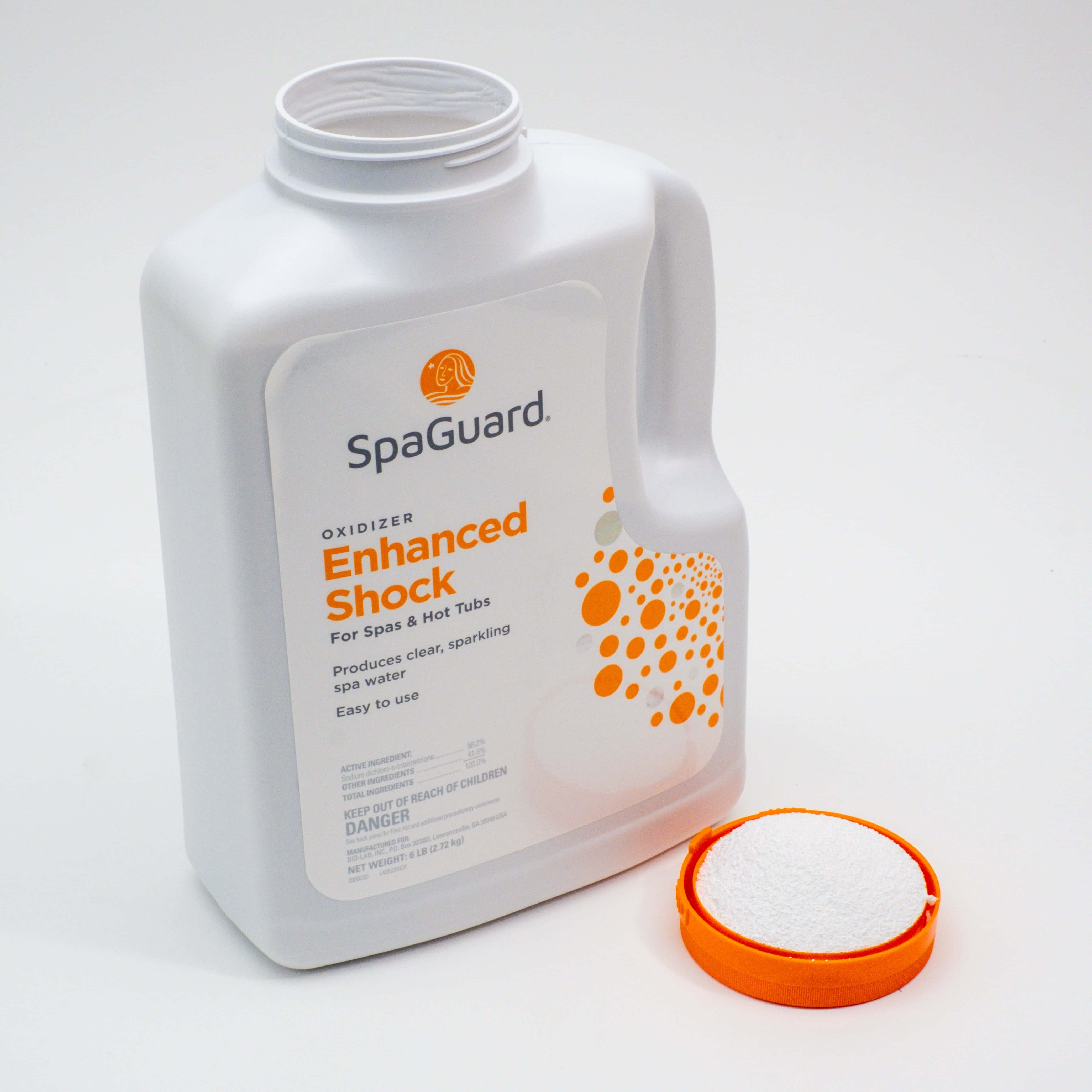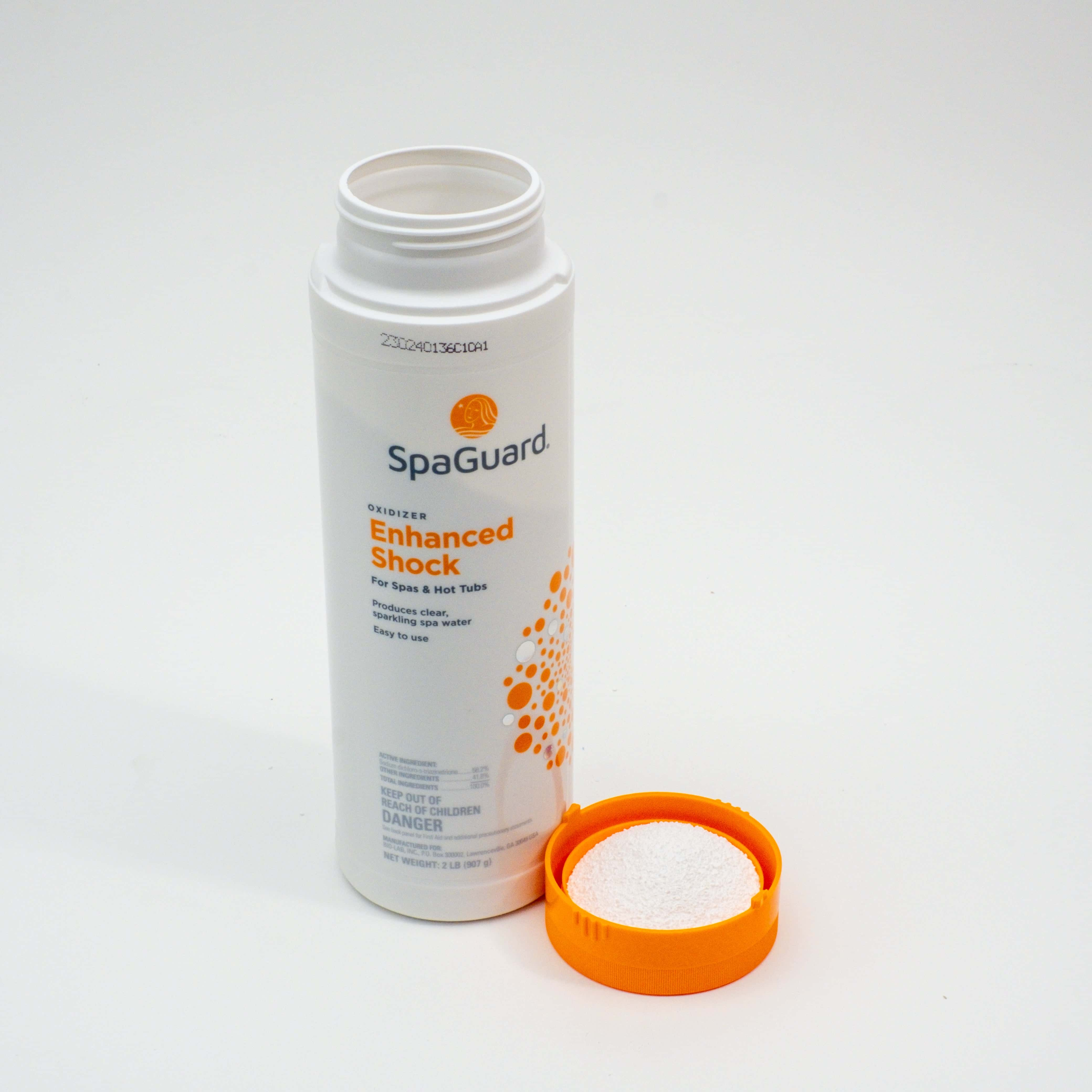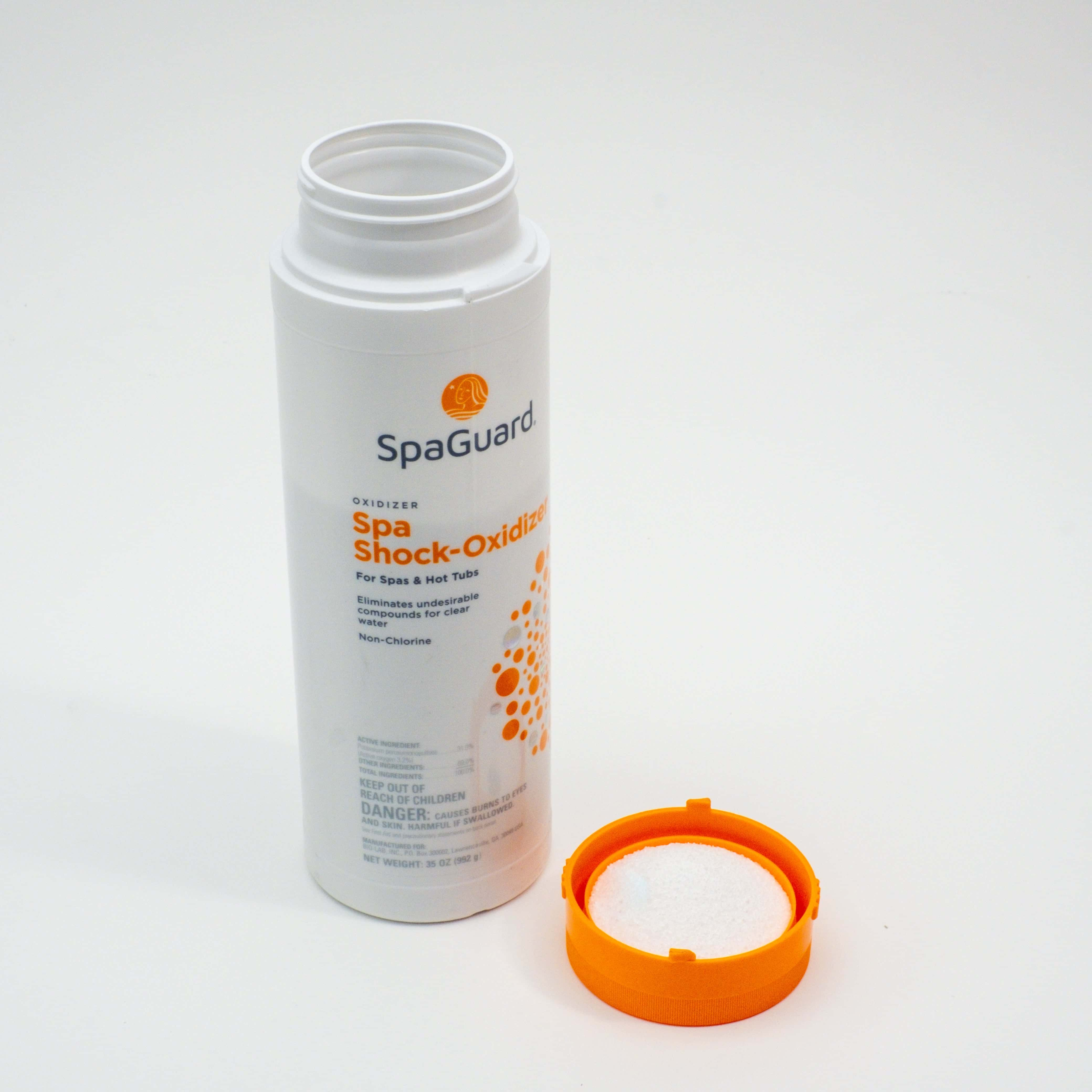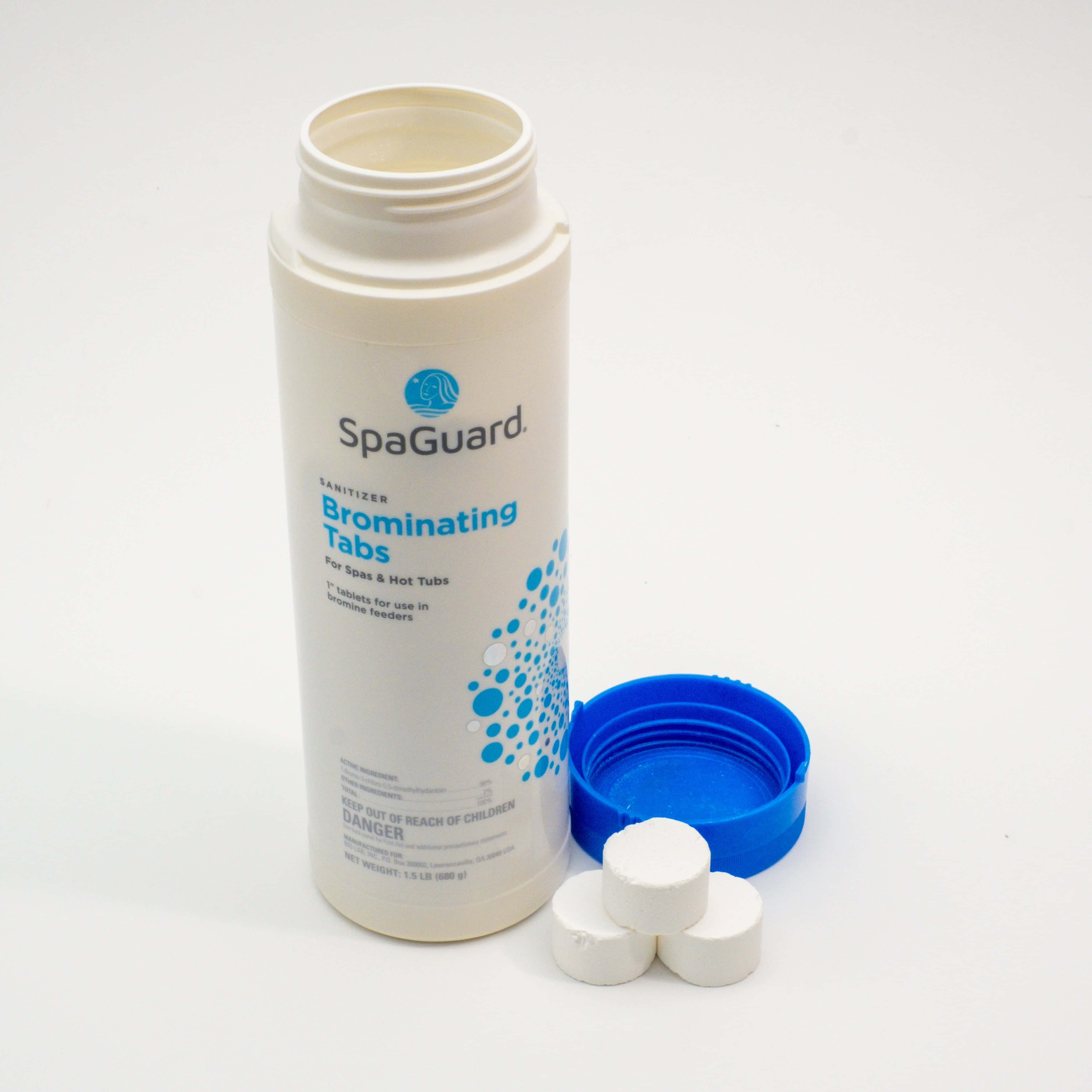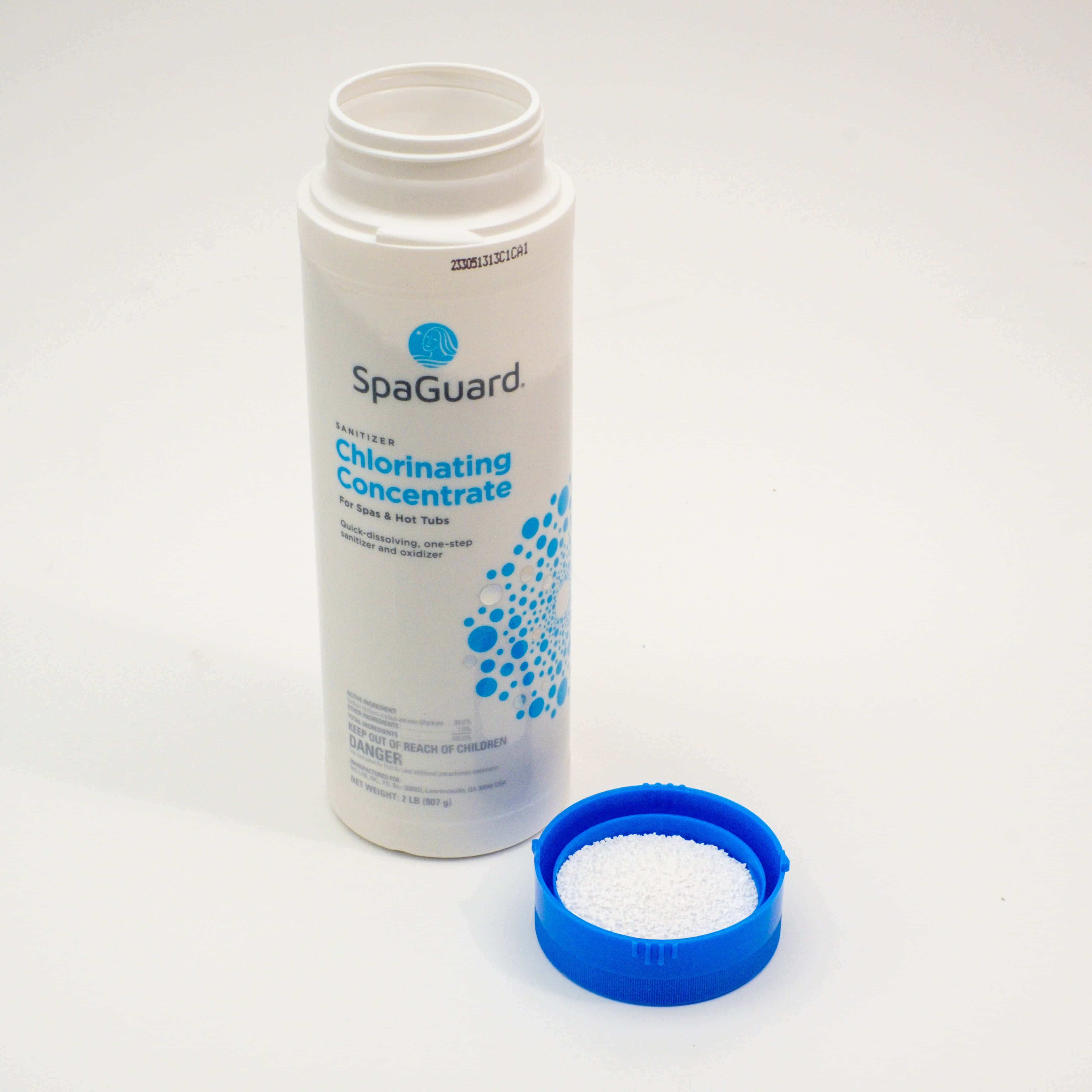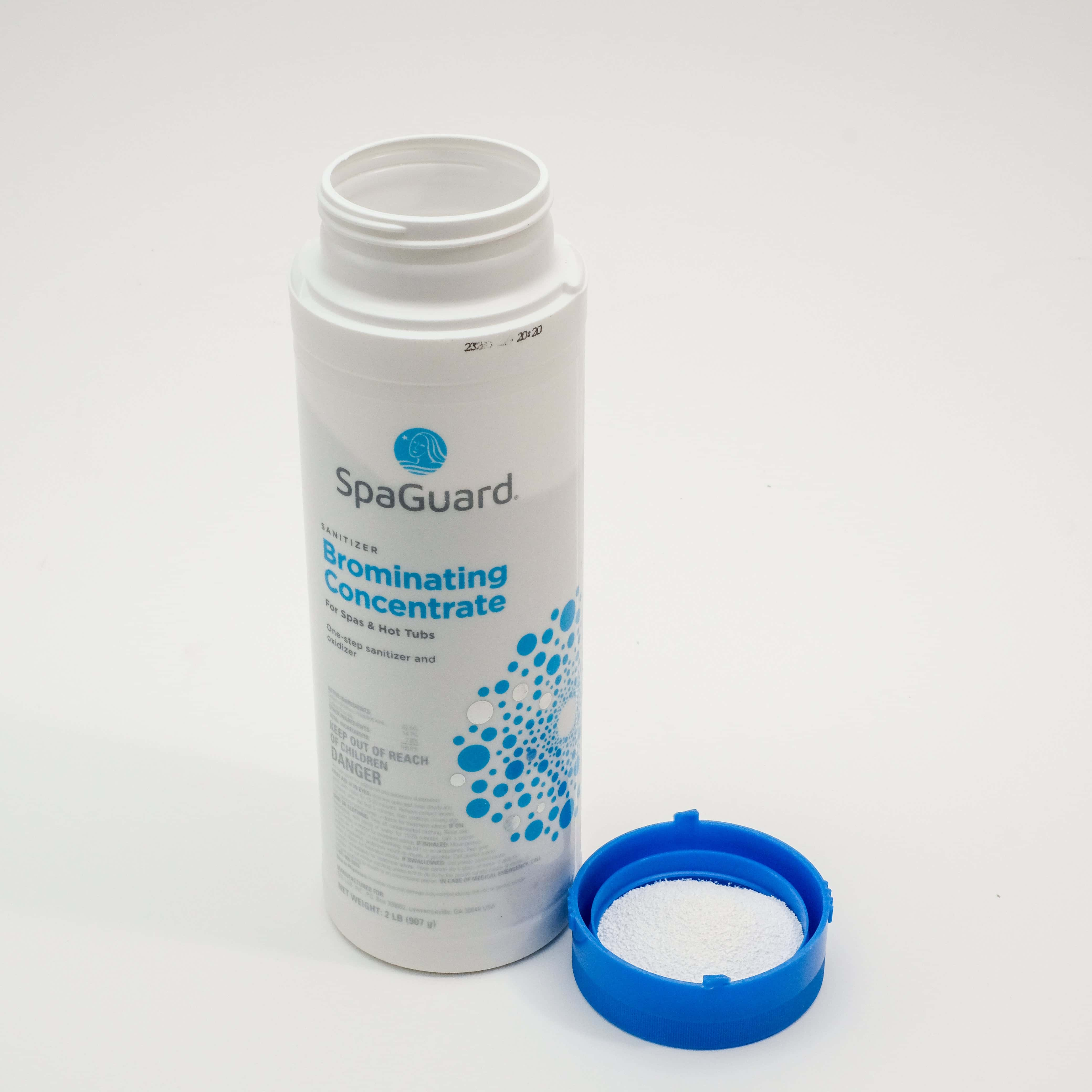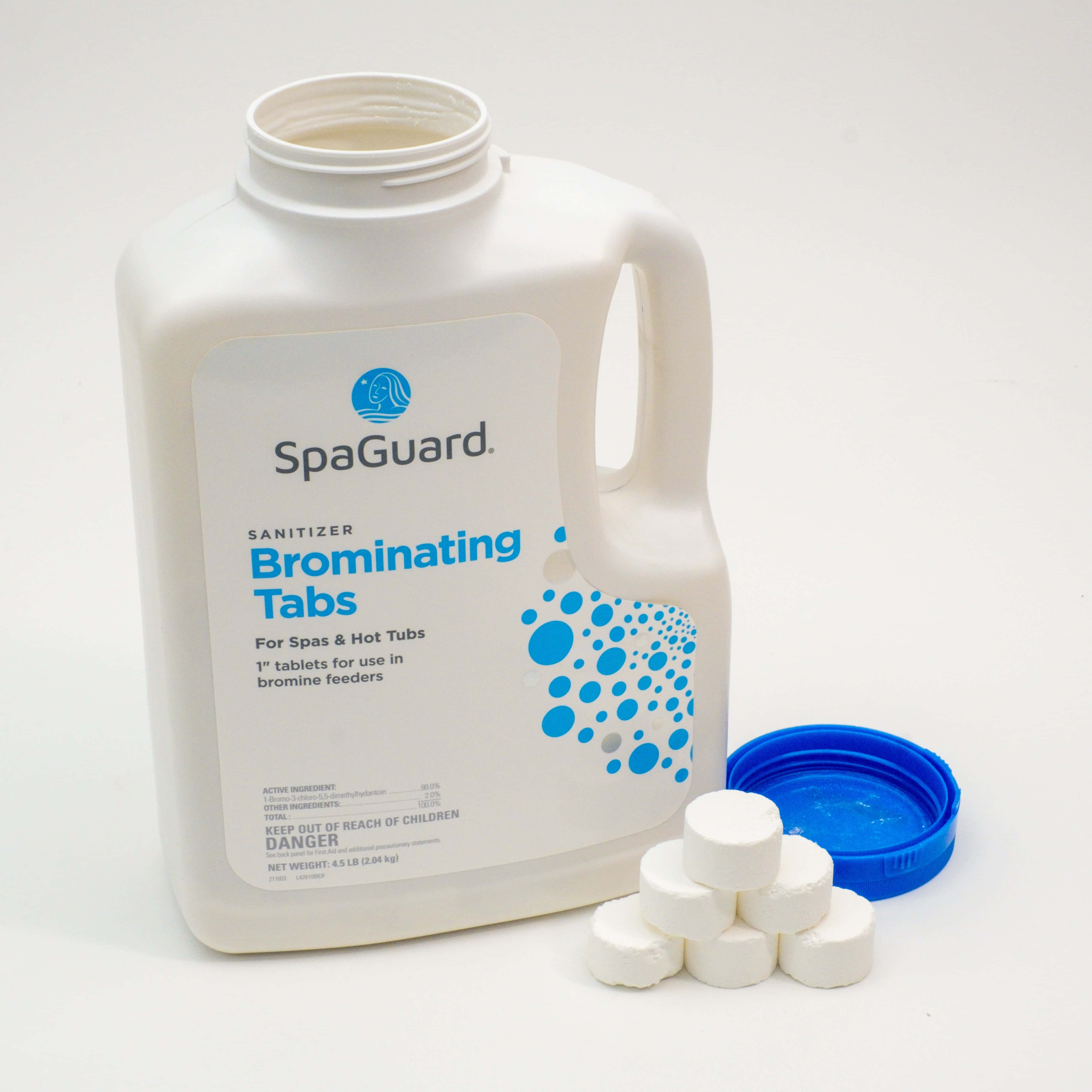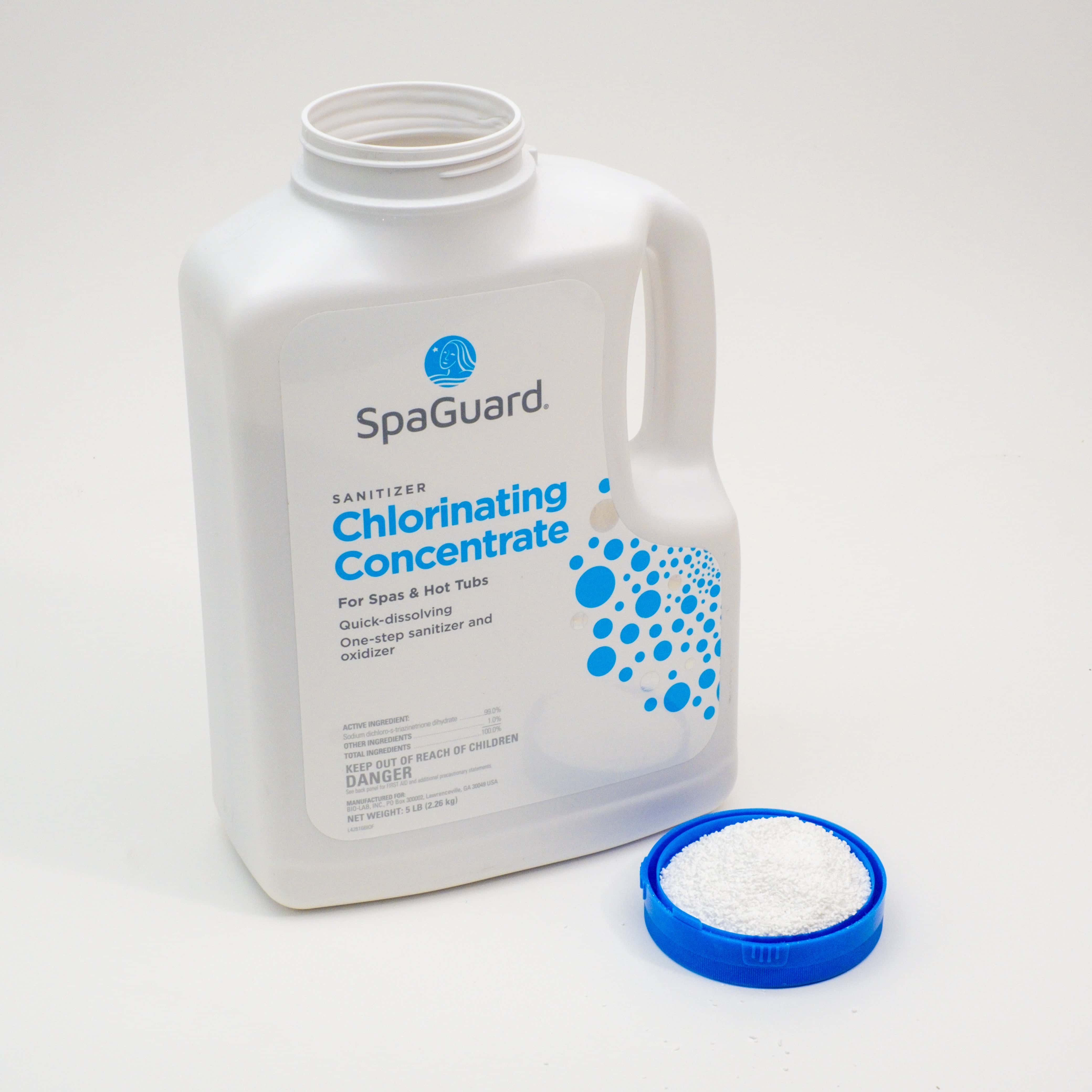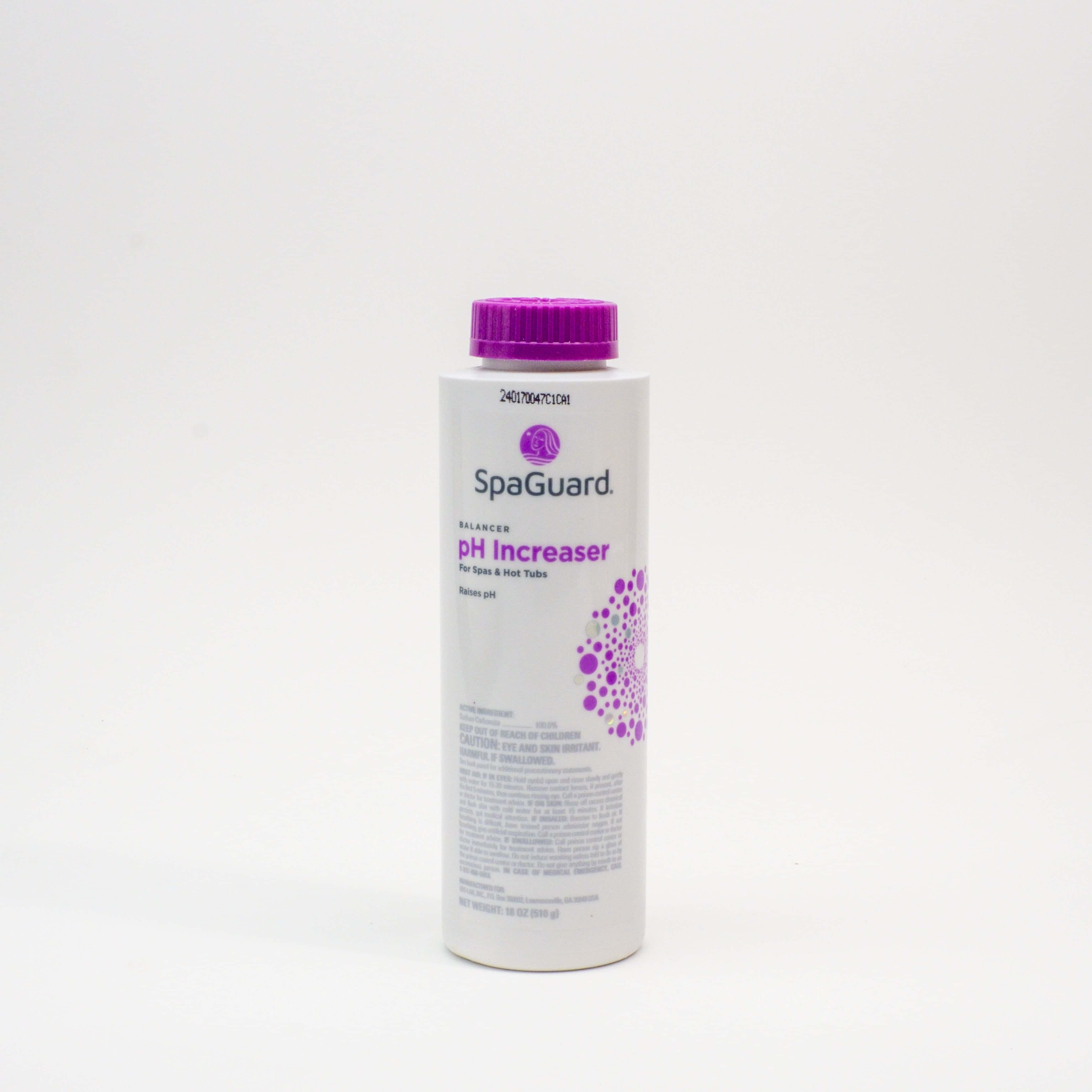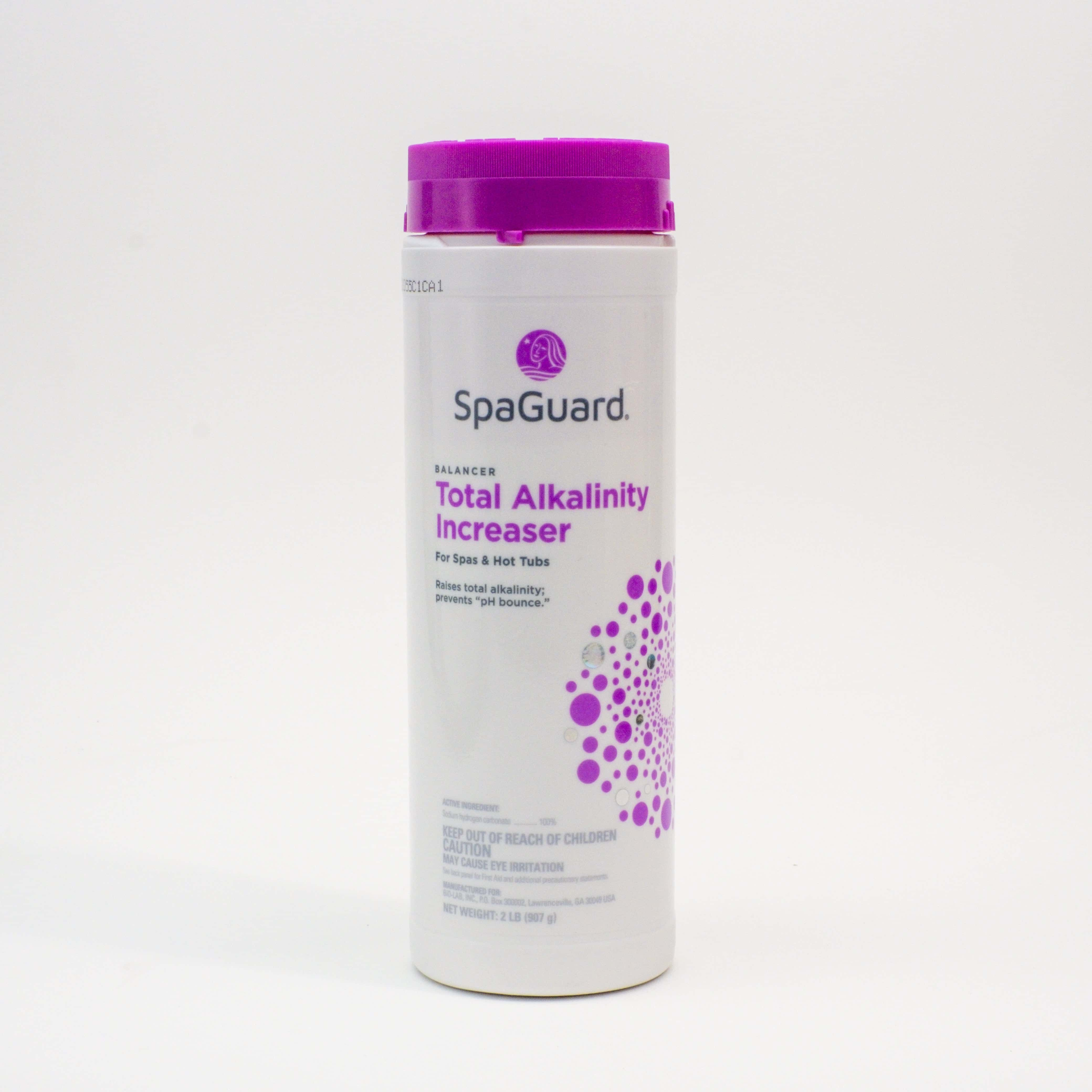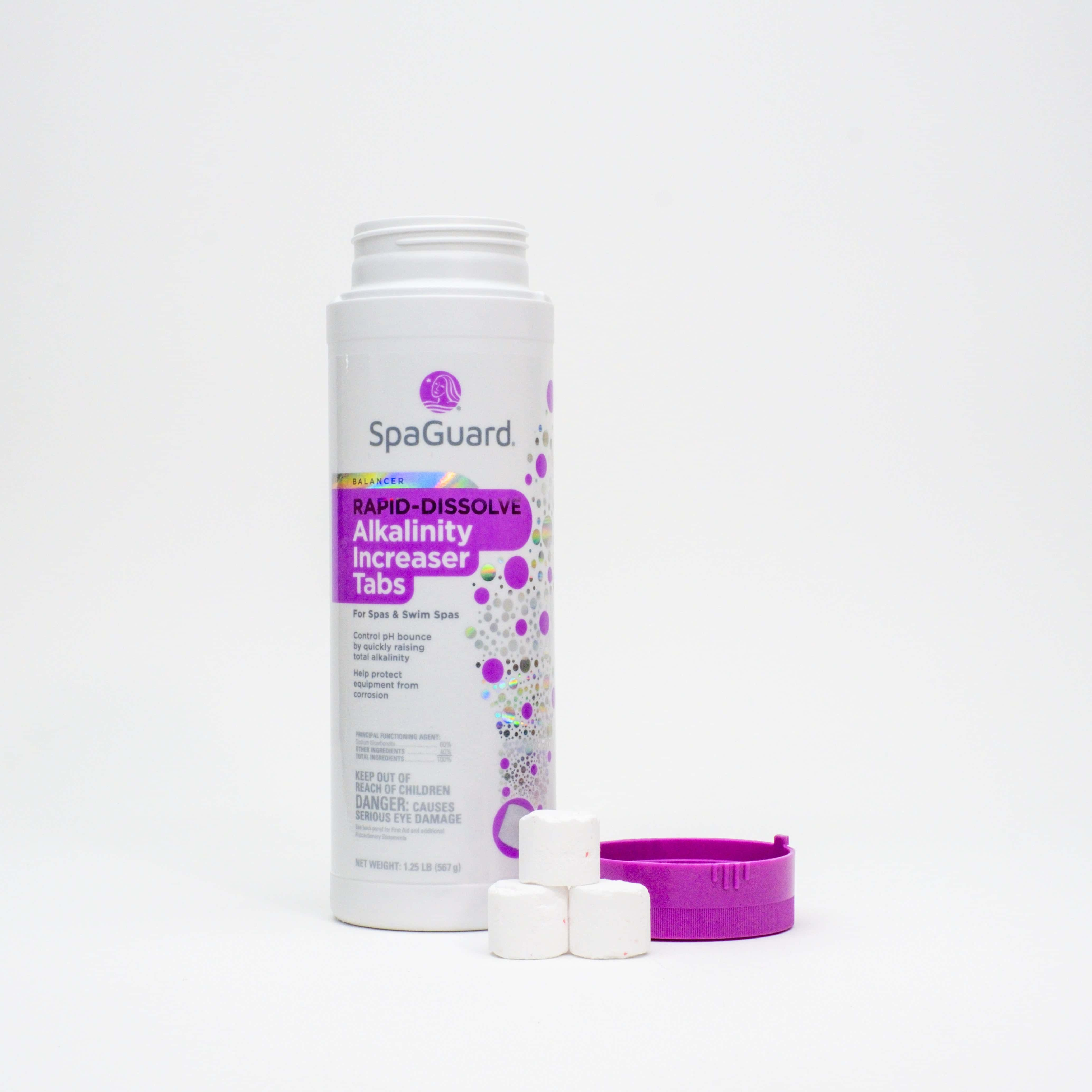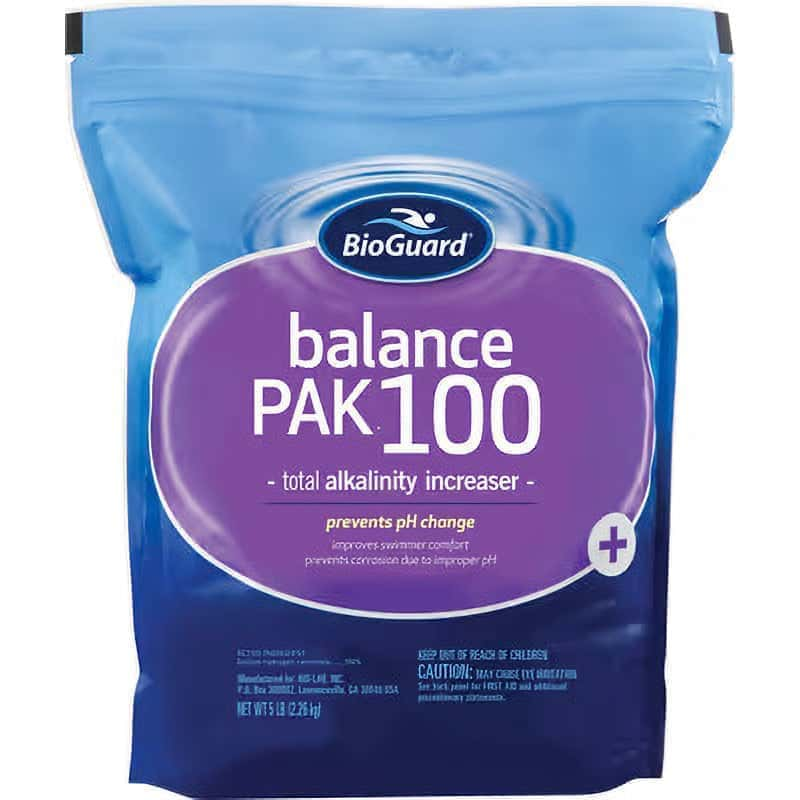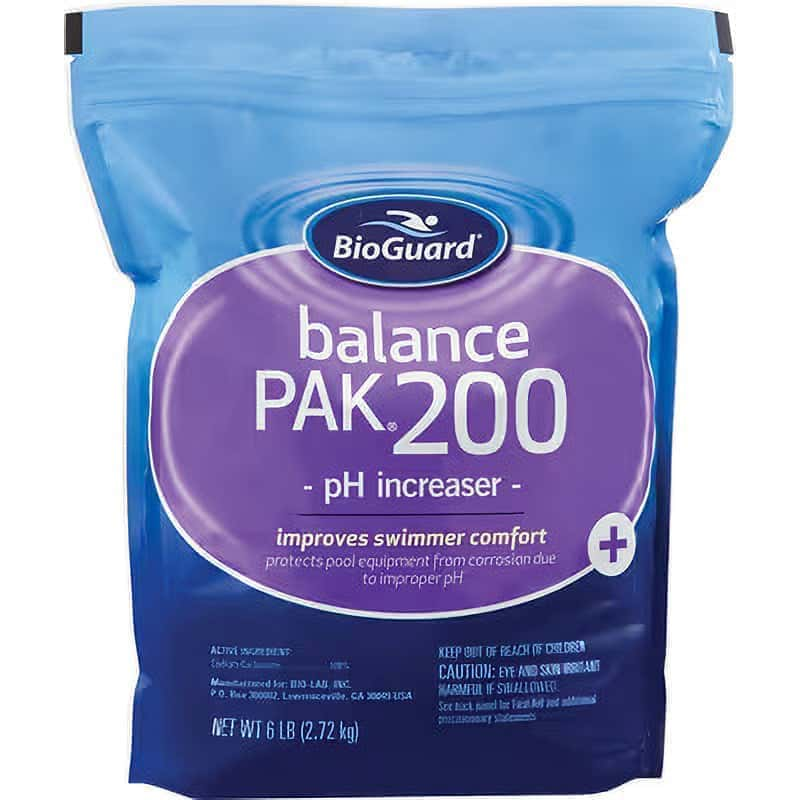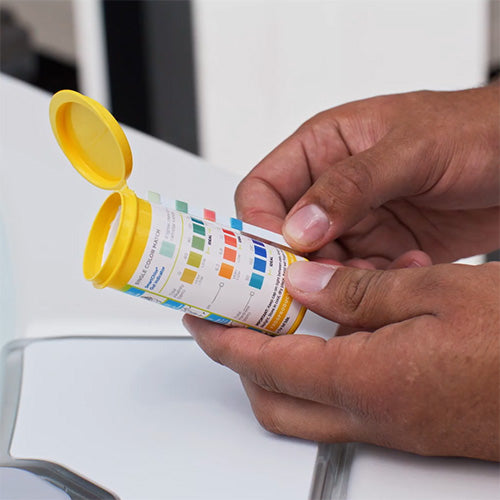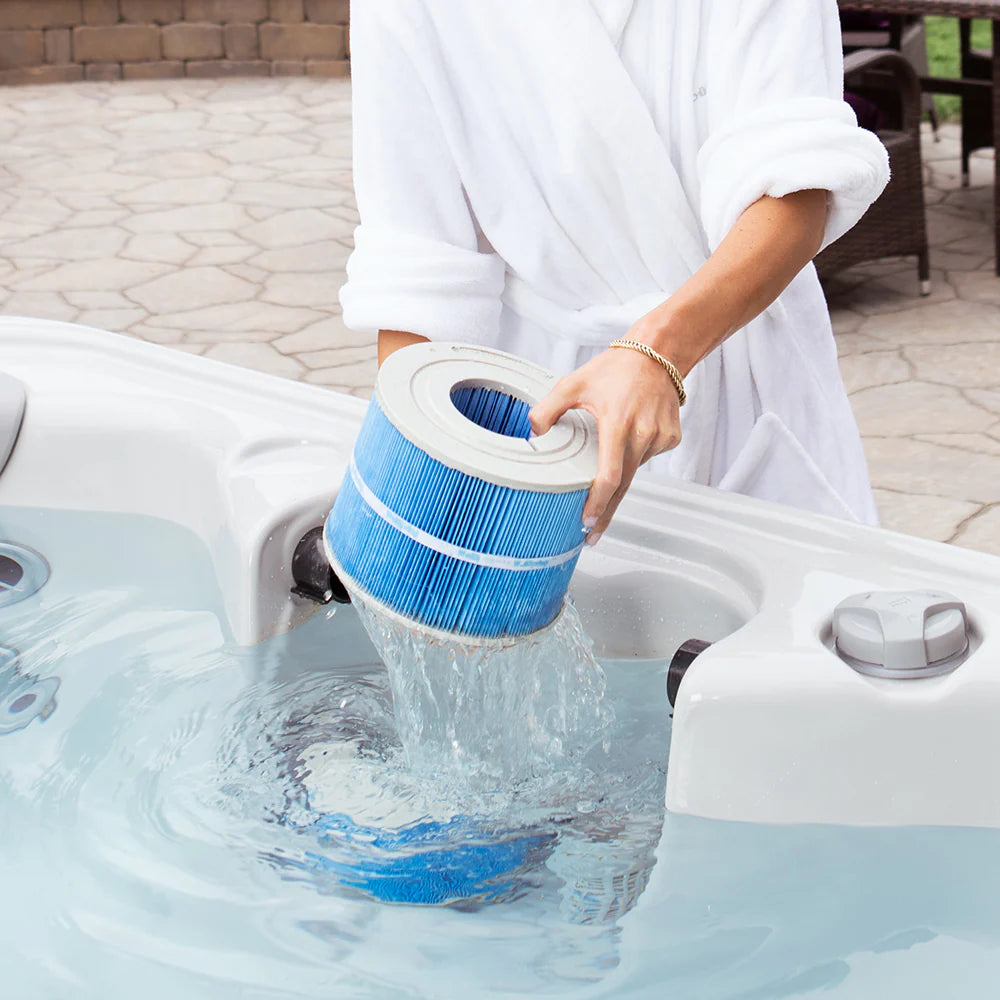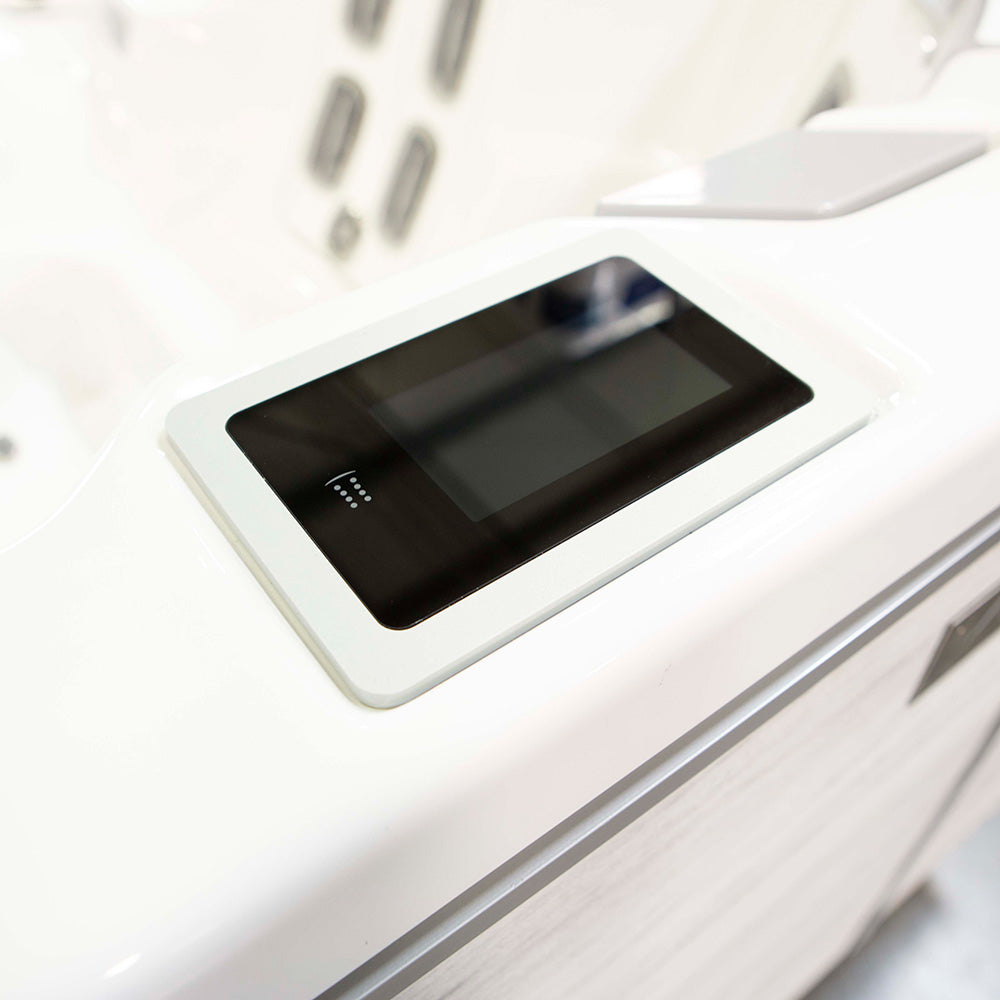TREAT YOUR SPA BY SYMPTOM
Most water problems are due to something missing in your regular water care routine of balance, sanitize, oxidize, and filter. Diagnose common issues and learn how to fix them below, and be sure to stock up on test strips while diagnosing the problem.
CLOUDY WATER
What causes cloudy water in a hot tub?
1. Dirty filters or not enough filter time.
If your filters are not doing their job, your water can become cloudy. Clean or replace them and check your filter cycle to ensure the appropriate amount of filtration time for your spa size.
2. Not enough sanitizer and/or oxidizer.
Sanitizer and oxidizer — also known as shock — work together to keep your spa clean and clear. Your test strip will show you if your sanitizer level is appropriate. If sanitizer is at the correct level, add more oxidizer. You should oxidize at least weekly, or more often to offset heavy use.
3. Old water.
If your TDS (total dissolved solids) is too high, your water will become cloudy and your sanitizer and oxidizer will struggle to clear it. This is a good indication to drain your spa and refill it with fresh water.
4. Phosphates in the water that are over 115ppb.
Phosphates are organic debris that essentially eat sanitizer. Sometimes they are found in fresh new water, or they can enter your spa by way of leaves, bugs, grass, windstorms, snow and rain. To fix, add phosphate remover and water clarifier to your water and increase filtration. Rinse filters at 6 hours and again at 24 hours.
How to fix Cloudy Water in a Hot Tub
1. Add Water Clarifier Water Clarifier can clear cloudy water by pulling particles together so that the filter can catch them.
2. Wait 24 Hours This gives the water clarifier enough time to capture the contaminates
3. Clean your filters You’ll know the water clarifier has done it’s job because your filters will need a good cleanse the day after.
IF its a phosphate problem repeat the steps above but add phosphate remover in addition to water clarifier
Gritty Surface
What causes a hot tub to feel gritty and chalky?
A gritty or chalky coating on the surface of your spa is an indicator that your pH and Alkalinity are too high. When your water is balanced, calcium is suspended in the water, but if your pH climbs above a 7.8, the calcium can fall out of suspension and begin to adhere to the spa’s surface leaving a coating that has a sandpaper like feeling. Over time, this build up can damage and shorten the life of your spa’s components so it’s important to remove the buildup and balance your water at the first sign of a calcium deposit.
How do you prevent grit in a hot tub?
- Use your test strips to check these levels weekly and adjust as needed.
- pH should be maintained between 7.2 and 7.6
- Alkalinity should be maintained between 80 and 120 ppm.
- Use pH decreaser as needed to reduce pH and Alkalinity.
- Regularly add Spa Guard Stain and Scale control to help prevent grit.
- Prevent this issue by maintaining your ph and alk by using a stabilizer such as SilkBalance Gems or Aquafiness tablets
How do you remove grit from the surface of a spa?
1. Lower your pH: The easiest way to remove calcium buildup is to temporarily lower your pH below 7.0. This will make the water more acidic and after a few days the grit should start to dissolve. Avoid using the spa during this time.
2. Scrub: Using a spa-safe scrub pad and Spa Guard Off the Wall surface cleaner, manually scrub the surface of your spa to dislodge the calcium buildup
Foamy Water
What causes hot tub water to foam?
1. Low levels of calcium in the water
Soft water, or water with less than 250ppm of calcium can cause foaming. Avoid filling your spa from a water softener and add Spa Guard Calcium Hardness Increaser as needed.
2. Water out of balance
If your pH and Alkalinity are too high. High Alkalinity and/or pH can cause the calcium to leave the water and build up on the surfaces of your spa. This also makes your water soft instead of hard and soft water makes foam. Use your test strips to balance your water back to appropriate levels to fix the foam problem. TIP: Use pH decreaser in small amounts (3 oz) to avoid bouncing too low and then too high. Wait several hours in between doses to let the water fully adjust.
Ph should be between 7.2 and 7.8
Alkalinity should be between 80 and 120 ppm
2. Dirty filters
If your filters are full of contaminants your water will become foamy. Whatever is in your filters is in your water. Rinse, clean or replace filters if needed.
3. High phosphates or other contaminants introduced to the water.
Body oils, spilled drinks, lotions, soap residual from street clothes or swim suits can result in foamy water. These can also create high levels of phosphates which will use up your sanitizer fast. Your local dealers can test your water for phosphates and recommend a remover, but rinsing off before soaking in your hot tub is the best practice.
4. High levels of Chlorine can cause foam.
If this is the issue, waiting for the levels to drop, draining some water, exposing the spa to sunshine, or adding a sanitizer neutralizer such as thio-trine. (we micro dose thio-trine to avoid it continuing to neutralize future sanitizer)
How to remove foam from a hot tub?
The most effective way to remove foam from a hot tub is to completely drain and refill your spa, unless its caused by soft water, then fixing the problem is the only way to solve the issue
Bathtub ring
Scum line that appears around the water edge is usually caused by dirt, body oils and lotions. It can also indicate that your filters are clogged. Here are some ways to fight the scum.
1. The best way to keep this away is to sanitize and oxidize regularly.
2. You should wipe the scum line away with a cloth or Scum buddie or Scum Disk to remove it from the water.
3. A Scum buddy/Disk/Scum Beetle is a reusable cloth pad that can be kept in the tub to help absorb the oil.
4. Spa Enzyme is a product that when added to the water will help eliminate oils and odors.
5. Rinsing lotions, and body oils off your skin before getting into the spa can help.
Green water
If your water has a green cast to it, it may be one of the following:
1. Not enough sanitizer
If there is not enough sanitizer to kill the bacteria in your water, then algae can start to grow and this can make a green color to the water. Check your water with a test strip to make sure your sanitizer level is where it should be.
2. Metals in your water
Minerals like iron and copper from your plumbing system can react to the chemicals and cause a greenish tint to the water, especially when adding oxidizer. Metal and scale control can help with this.
High pH & alkalinity
Balanced ph and alkalinity are most important for bather comfort.
1. High ph
High ph can cause alkalinity to rise leading to scale buildup. Ph higher than 7.6 will tell smartchlor to stop working and ph higher than 7.8 will tell chlorine to stop working leading to cloudy water. This can also make your skin itch.
2. High alkalinity
High alkalinity will cause grit and scale to build up on your spa walls. This can make jets and the mechanical parts of your spa stop working. Scale on your heating element, pumps, jets etc can void your warranty.
Products you may need:
Low pH & alkalinity
1. Low pH
Increase ph with ph increaser, low ph is acidic and can be beneficial if there is scale on the spa walls, but if its left too low, for too long it will and can eat spa acrylic- voiding your warranty. Ph lower than 7.2 can tell Smartchlor and Chlorine to stop sanitizing the water leading to cloudy water. It can also make your skin itch
2. Low alkalinity
Low alkalinity in a hot tub can cause the water to become acidic, which can damage the hot tub and irritate skin and eyes. It can also make it harder to sanitize the water. This can cause skin irritation and allow your spa water to eat at your acrylic shell
Products you may need:
High Phosphates
Phosphates are organic debris that can eat sanitizer causing a variety of problems. In hot tubs, phosphates can come from various sources like pool chemicals and body care products. While phosphates themselves aren't harmful at typical levels, they can promote algae growth in the water, especially if concentrations get too high (above 1,000 ppb). Excessive algae can cause water quality problems, leading to cloudy water and the need for more maintenance. Keeping phosphate levels in check is important for maintaining clean, safe hot tub water. In a hot tub, we treat at 115 ppb with phosphate remover and water clarifier. Increase filtration and then rinse or clean filters at 6 and 24 hours. Consider adding a water filter to your hose to filter out phosphate contaminants before adding it to your water
